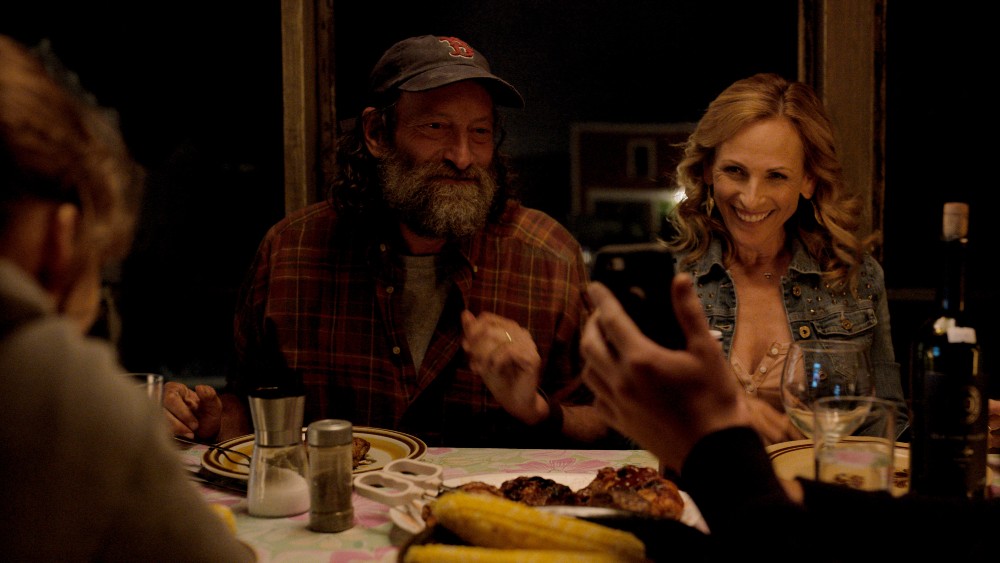
When Siân Heder’s Coda (an acronym for Child of Deaf Adults) premiered at this year’s virtual Sundance Film Festival, it took the venerable festival by storm, really blowing away everyone who saw it due to its originality and creative vision. When the awards were announced, Coda unsurprisingly ended up taking home not only the Grand Jury Prize but also the Audience Award, not the first time this has happened but a clear sign that a film is able to appeal to a much wider audience.
Heder had previously been at Sundance with her first feature, Tallulah, and she had been directing television since then, including the Apple TV+ series, Little America, which is where Coda ended up, ironically, in a Sundance record-breaking sale to Apple.
Coda introduces the world to Emilia Jones, who plays Ruby Rossi, the only hearing person in her family of deaf fishermen working hard to make a living in Gloucester, Massachusetts. Ruby has other aspirations and talents, as her skill as a singer is discovered by the school’s music teacher, Mr. Villalobos (Eugenio Derbez) who pairs Ruby with a fellow student (Ferdio Walsh-Peelo from Sing Street) to perform a duet at the school recital.
It’s certainly not a movie you expect to work as it bounces between singing and fishing, but Jones’ performances opposite a trio of fabulous actors — who happen to be deaf — including Oscar-winner Marlee Matlin as Ruby’s mother Jackie, Troy Kotsur as her husband Frank, and Daniel Durant as Ruby’s brother Leo, makes Coda one of the true breakouts of the year.
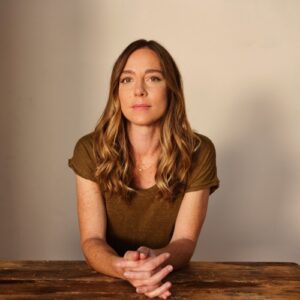
Below the Line spoke with Ms. Heder over the phone for the following interview.
Below the Line: As I was watching the movie again, I was thinking that the movie is such a strange combination of elements that they couldn’t possibly work together, so I’m not sure how you went about pitching it to find funding.
Siân Heder: It was funny to pitch it, because finding a logline that incorporates all of those — there was fishing and ASL and singing all together. [laughs] It definitely felt like different elements, but I think that’s what adds to kind of the specificity of the story, ultimately, but certainly, when I was pitching it around, it felt like they were at odds with each other, possibly.
BTL: How did you end up with Philippe Rousselet as a producer, because this didn’t seem like his kind of movie.
Heder: Well, Philippe, actually, was one of the producers on the original French film, and I think he had been involved with the movie at Lionsgate, but then ultimately, it wasn’t going to make get made at the studio, and he was the one who brought the financing. So he found the financing both through his company and a partnership with Pathe and financed the movie independently without a distributor in place. So [he] put a lot of faith in me as a storyteller and gave me a lot of freedom to make the movie that I wanted to make. So that was pretty exciting.
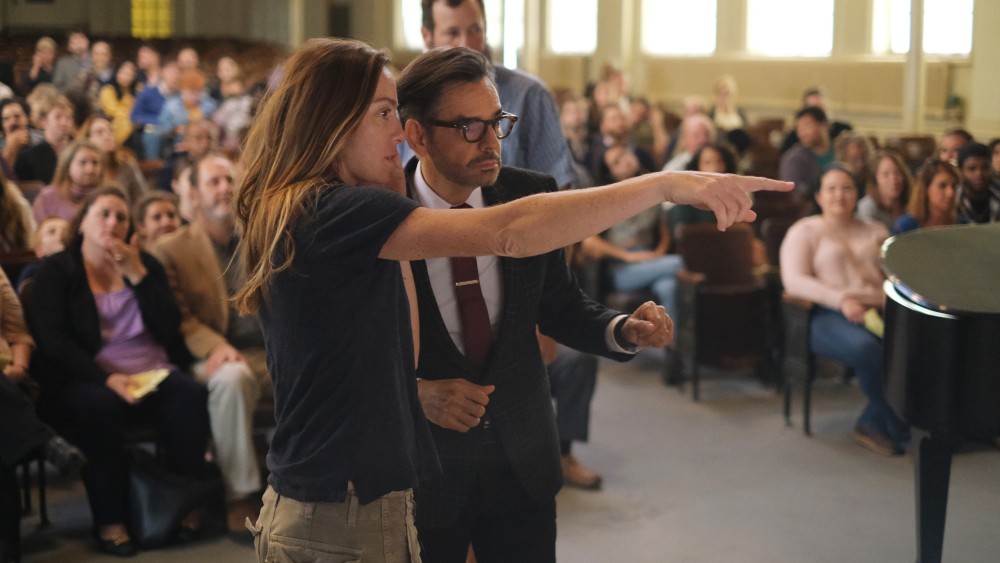
BTL: You can kind of tell that I hadn’t read any press notes, because I had no idea that there even was a French before until you mentioned it.
Heder: It’s based on a French film called La Famille Bélier, and I was approached, after I was at Sundance in 2016 with Tallulah, because it was originally going to be a studio movie, and Lionsgate was looking to do a remake of the French film and wanted a filmmaker who would come in with kind of a fresh take on the material and a way to make it their own film. I had grown up going to Gloucester, Massachusetts, every summer as a kid. I grew up in Cambridge, and we had a lot of friends that lived up in Gloucester. I knew that town and I knew the struggles that the fishing industry was facing there and had met a lot of interesting characters over the years and thought it would kind of be an interesting working-class American setting to put it in this town and in this industry, where all of these fishermen were rapidly losing their livelihoods. So I came in with that perspective, and also, wanted to use deaf actors in these roles and make sure that ASL was a really integral part of the story, and that we were using pure ASL and not having a hearing character speak throughout the whole movie, which is often what they do when they portray deaf and hearing characters together. I think all of that was a part of what I came in excited about as a filmmaker, and then, what they saw in my vision that made them want to put me on the project.
BTL: Was any of the fishing or ASL part of the French film as well?
Heder: It was limited in the French film, because they did not use deaf actors. That was something that I was looking to rectify. I felt like it was a missed creative opportunity as well.
BTL: How did you go about finding a place to shoot? Were you able to actually shoot in Gloucester?
Heder: I wanted to shoot in Gloucester. I was actually desperate to shoot in Gloucester, because all of these locations that I’d written into the script were so specific in my mind, I had all these childhood memories connected to them. And so, there was a scene at the quarries where the kids go and jump off the quarry cliffs and the quarries around Gloucester are so specific. I’ve never seen anything like it anywhere else in the world. There were just elements that I felt visually and in terms of the feeling of the town that were so specific. And then of course, when you get into the conversations with your line producer regarding budget, it was expensive to shoot in Gloucester. Everybody was pushing me to go to Canada and fake Nova Scotia for Gloucester. I really fought hard to shoot in the place that I wrote it for, because I wanted the town to be like a character in the movie. I wanted to be able to explore the locations that I knew were actually there. And not just that, but the smaller characters, those authentic-feeling Boston, local guys with a very specific sense of humor. So yes, I pushed hard to shoot in the town, and we shot all practical locations in Gloucester. My production designer, my DP, and I had a wild time exploring the town before shooting even started, to really find the locations that were inspiring to us. When they go to Berklee, the theater that is the Berklee theater is not actually at Berklee, but the exterior of Berklee was the real exterior. So we were pretty much in the places that you think you’re in. In the movie, we were actually there.
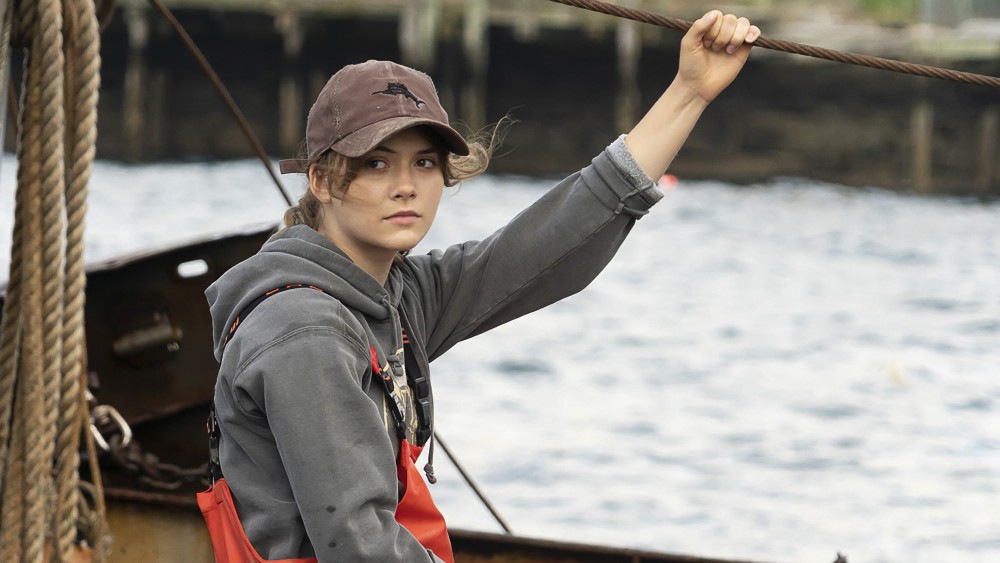
BTL: Is Boston close enough that you can get crew in to help with the shoot or were you mainly using locals?
Heder: There’s a pretty good crew base in Boston now. They’ve had a tax credit going for a while. It’s not a deep crew base, so you sort of have to look at what else is shooting at the same time as you, but I definitely felt like I had a great crew in Boston. And pretty much all local. I mean, we brought in some interpreters from New York, but other than that, everybody was pretty much from the area.
BTL: I’m curious about putting together your team for this one. I know you’ve worked with DoP Paula Huidobro before, she shot Tallulah. Diane Lederman, your production designer was new, so how did you go about finding the right team for this one?
Heder: Actually, Paula and I met when we were both students at AFI, so I met Paula years ago, and she shot my first short film. She had just won the student Academy Award, and I was a student at the AFI Directing Workshop for Women. The first film I ever made Paula shot, and then it’s been interesting to grow up together in the industry and sort of go off and make our way separately and come back together. She shot Tallulah, she shot Coda, she shot Little America for me, which is the show that I showrun. We made another short film together called Dog Eat Dog. So we’ve worked together many times over the years and definitely have our rhythms and our process together that is ingrained, actually similar to how we first started working when I made my first short film. My sister’s a storyboard artist, and we sit there with my sister, and then we’ll talk through scenes and roam around together and look at locations. It’s kind of a familial relationship at this point, and we really know each other’s eye and perspective and have a shorthand when it comes to communicating, creatively.
Diane, I had worked with on Little America. I hired her on that show, and I had worked with her and I just thought she had a great … I think her locations and her shots are beautiful, but also there’s sort of an authenticity of a way that she digs into a place that I thought would be really right for this film. There’s a lot of visual contradictions in Gloucester. It’s a very beautiful place on some level, and it looks like a quintessential New England town with the rocky shoreline. But it’s also gritty, and there’s abandoned warehouses down on the waterfront that are full of pigeon and seagull sh*t and have kind of a downtrodden feel to them. I think with Diane and Paola, we were looking at how do we capture the beauty of this town, but also really keep the film grounded? This is a family that’s struggling. Their houses is small and falling down, and very well-loved but certainly lived in. Finding those practical locations, and being visually inspired by the landscape there, which is often kind of blue-gray with the ocean and the buildings, but then you have these pops of color and these bright orange fishing grundens and buoys and the slickers that the fishermen were. Looking at all those visual inspirations that are actually just organically coming out of the town.
And Geraud Brisson, my editor, I worked with on Little America as well, and when I worked with him on Little America, I just thought he was an amazing problem solver. He really digs in and cares about story and is very sensitive in terms of uncovering the heart of whatever story you’re telling. We had a short time working together on Little America, but then he was a major ally for me in finding the story, because we ended up cutting about 30-something scenes from the script from that we shot, and really finding the movie within it. The initial cut was three hours long, and then we had to find Coda within that.
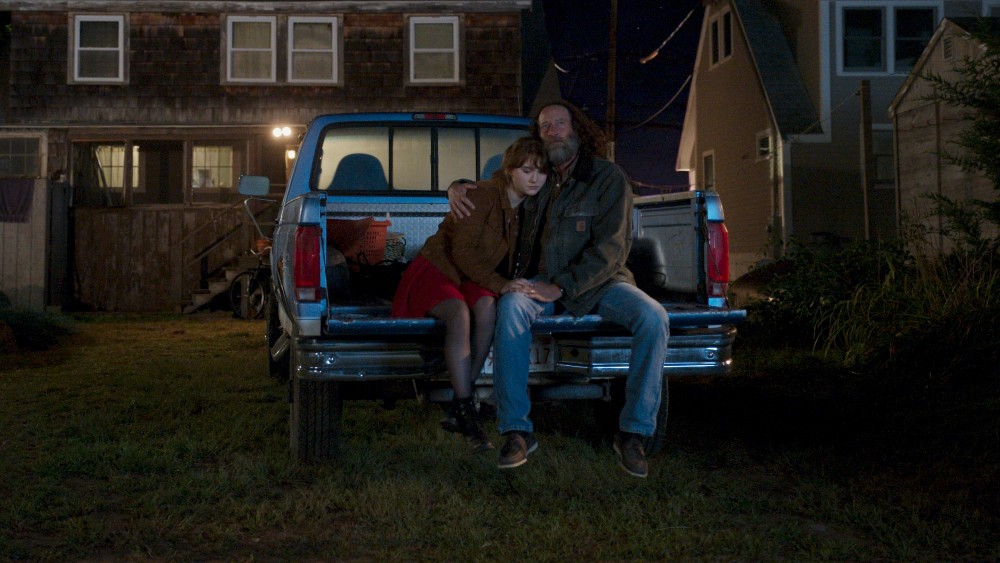
BTL: I don’t generally ask about actors, but I feel like Emilia Jones is one of those once-in-a-lifetime finds, because she had to be able to sing and do ASL proficiently enough to act opposite amazing actors like Marlee Matlin. Was there a huge casting call, or did your casting director just find her?
Heder: My casting directors, Deborah Aquila and Tricia [Wood] and Lisa Zaboria, they were relentless. We saw maybe 100 girls, and they knew. I remember Deb turned to me and said, “You know that you’re looking for a unicorn?” and I said, “I know that, but I think she’s out there.” Because I really wanted someone who could be all the things that the role required, which meant that she needs to sing beautifully, and I was looking for an actual teenager. I really can’t stand it when you watch high school kids that are 25-year-olds. [laughs]
I remember watching 90210 when I was a kid, and you’re watching 30-year-olds play high school. I think you can feel genuinely when someone is at that precarious age where they’re not quite an adult. I really was looking for that. And then yes, she had this sign like a fluent signer opposite a deaf cast and hold her own and go out on fishing boats and learn how to run those boats.
I mean, that was an insane part of production, because little did I know — I mean, I was warned by my marine coordinator — in order to shoot the kind of fishing that we were shooting, which is dragger fishing or ground fishing, you actually have to go out and fish, and you have to go not in the harbor, you have to go three miles out to sea with big five-foot waves and weather and all of that to capture that kind of fishing. Emilia went out on those boats with Troy and Daniel and learned how to run those nets and the winch and the doors and all the things you have to, and not be squeamish about it.
She was just an amazing find for me, and she felt like a girl from this town. She had a very interesting kind of grounded vibe, but also incredibly nuanced. I mean, every thought Emilia has flickers across her face. Her acting is incredibly subtle, and yet fully alive and rich and deep. I don’t know, I was really lucky to find her, and she was just such a badass. I remember we were up shooting the quarry jump, and of course, I had a stunt person ready to jump off this 40-foot cliff. And Emilia was just begging me to do it herself. I kept saying, “What if you hurt yourself? We need you tomorrow.” And she’s like, “Oh, please, I want to do it, I want to do it.” And I said, “Look, I’ll come back with you, and we’ll jump off the cliff when we’re done shooting, but you need a stuntperson to do this.” So she’s just very game and took on the role very seriously in terms of understanding, not just the ASL but really digging into deaf culture and spending a lot of time with our cast and our ASL consultants outside of shooting. I’m a little bit in awe of her, because she really was a kid — she was 17 when we shot.
BTL: I’m glad you brought up the fishing, because I was curious about that. I know on a much bigger budget movie, they’d have a water tank on a soundstage with a fake boat, but you can tell they’re really out there.
Heder: The fishing was really guerilla-style. I met my marine coordinator, Joe Borland, because I reached out to Kenny Lonergan when I was making the film, because I knew they’d shot Manchester by the Sea in that same part of the world. I was reaching out for crew recommendations, and he said, “If you hire one person hire this guy, Joe Borland. Our days at sea were our best days that we had on the shoot.” Joe and I started conversations really early on, and I remember him saying to me, “Could this family be lobstermen? The kind of fishing that you want to do is really hard. Like, you’re going to actually have to go out to sea and fish in order to capture that. Is that something that you want to do? Because that’s a really hard thing to do with a 100-person crew.” And then, of course, I fell in love with a boat that I found down on the wharf, as I was hanging out and walking around. There was this Captain Paul Vitaly and his boat, the Angela Rose, which is this total rust bucket [laughs] that could only fit like 10 to 12 people on the boat. It had no bathroom on it, and it was a real working fishing boat, but it just felt like the family’s boat. And then, of course, when I introduced that boat to the mix, Joe was like, “You’ve got to be kidding me. THAT’s your picture boat?”
So there was a lot of support. We had a Technocrane on a camera boat. We had our hero picture boat, and then, we had a whale watch boat that was out with us that the rest of the crew — we had lunch on and the hair and makeup people were on — and then, many safety boats and shuttle boats. It was like a Navy Armada going out to sea every day, and we had to shoot in a really guerilla way. It’s almost documentary-style once we were on the boat, because you’re not doing touch-up on your actor. We had really minimal crew. My camera operators are standing in three feet of fish on deck and getting rocked back and forth and jumping from boat to boat every time we had to transfer boats. It really felt hilariously guerilla-style and fun in a way. I think the crew, as hard as it was, had a lot of fun on those days, because it felt like being out in the middle of warfare.
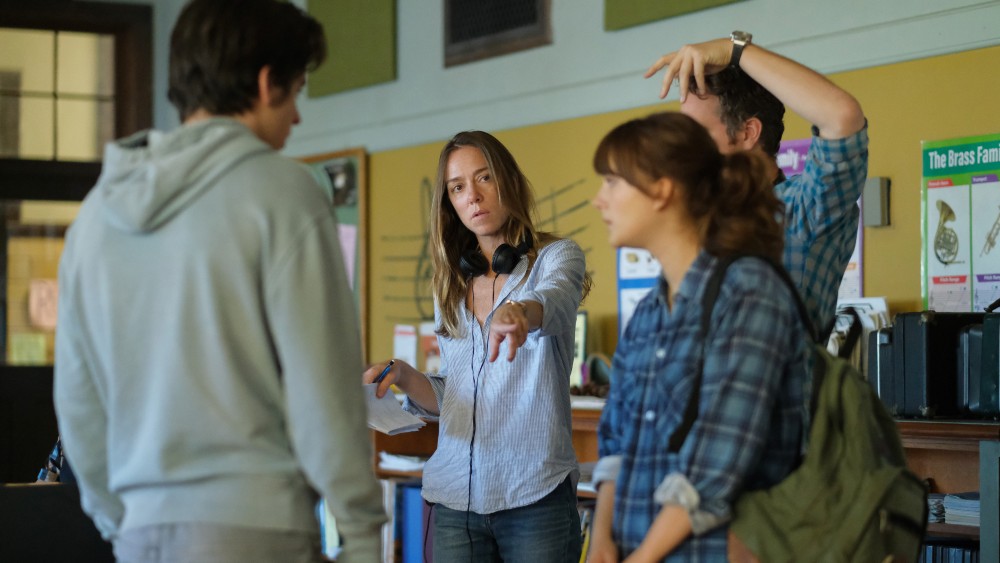
BTL: I want to switch gears to the sound and the music. The first thing I noticed on second viewing is how quiet the movie is, because there’s no score. During the more dramatic scenes, it’s mainly silence and that just amazed me. It seemed like something we might see in a Michael Haneke or Mike Leigh movie, but then you have Marius De Vries helping with the big singing numbers.
Heder: Marius De Vries and Nick Baxter, who works with Marius, they were my music producers, and were an incredible team. They did all the arrangements for the choir, and worked with Emilia to really open up her voice. She’d never had a vocal lesson before. A lot of it was really expanding her range and giving her the confidence to… I think she auditioned with Landslide by Stevie Nicks, which is a very quiet acoustic cover, and then suddenly I’m throwing her Etta James and these other songs, and she’s like, “Are you kidding me? You want me to sing this?” Marius and Nick were really key for me in working with Emilia and finding a real choir. So we found a Berklee choir called Pitch Slapped. And then, of course, they were TOO good to be a Gloucester High School choir, so I had to put some kids in there that were not good singers, so we could kind of take it down to the level that felt appropriate for that high school. For so much of it, we recorded all the music live on set. I really wanted to capture all the flaws of performance and the feeling of being in that room. That’s obviously challenging when you’re recording out on a boat with the boat engines and the seagulls and all of that stuff, and so that part of it was also a real challenge.
And then in terms of the sound and score, one thing that was interesting when I was on set, and we were in rehearsal, and I was watching these ASL scenes, they’re NOT silent. There’s so many intimate small sounds in those scenes, be it the rustle of hands against clothes or fingers slapping together when somebody’s emphatically signing something or breath or small vocalizations. With my sound team on set, I was very specifically, “Please capture these sounds.” I remember lav-ing [i.e. putting a lavalier mic on] Marlee Matlin, and she was like, “Why are you putting a lav on me? No one ever puts a lav on me.” And I said, “Because there are all these beautiful quiet, intimate sounds that your body is making that I want to record and have present in the scene.” And then when it came to scoring, I think because ASL is a purely visual language and those scenes are largely silent, the moment we tried to add music into any of those scenes, it really overpowered what was happening on screen. The music took too much importance within the scene and felt like it was leading the emotion as opposed to the performances and the dialogue. So we were really careful to leave those scenes silent and always let the music follow the emotion. There are a couple places where there’s music at the very end of the scene, but we made sure the music was never going to take over what was happening on screen and never feel like it was manipulating the audience or taking people somewhere that they had already gone to emotionally.
The score was a real dance to find the places where music could live. What I love is that there’s so much music in the film, and it’s mostly these choir scenes or singing themes, and that the balance between silence and music in the film, I think, is really wonderful rhythmically and in terms of tempo. The way that we played with that in the cut was very intentional. Also, really being aware of walking a hearing audience slowly into the experience of these ASL scenes. At the beginning of the film, there’s a real balance between an ASL scene or a dialogue scene or music/choir scene, and making sure that we’re sort of slowly walking an audience into them, and then by the end of the film, I think there’s six ASL scenes in a row, but at that point, the audience is so comfortable in the silence and invested in the characters that I think people don’t even notice that they’re watching this other language. They’re just invested in this family. And I think the normalizing of ASL and of deaf culture was also very intentional.
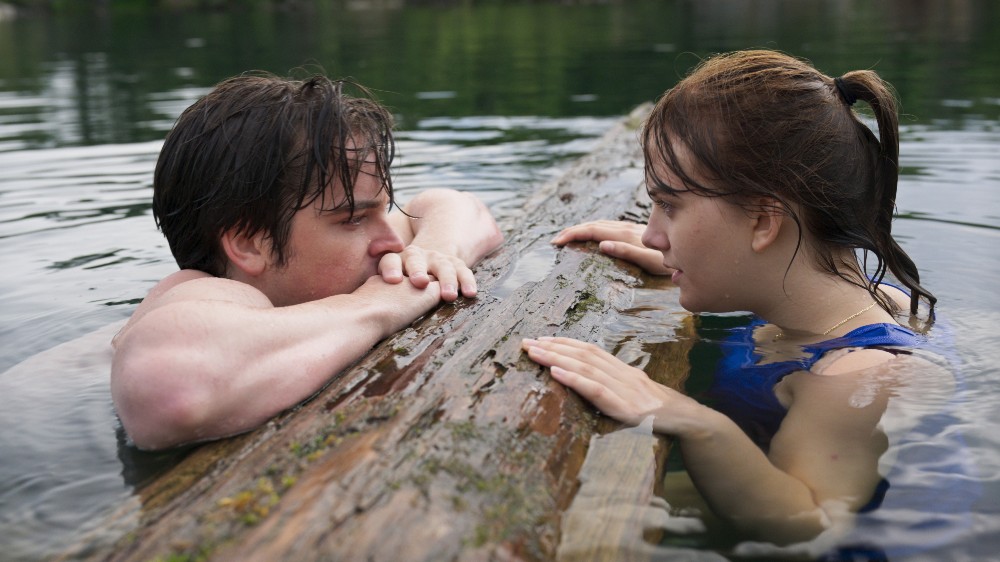
BTL: We don’t often talk about costumes for a movie like this. Usually, costumes are noticed and praised for bigger fantasy movies and period epics. And yet, there’s so many interesting choices, like how Ruby and her family dress and her classmates. I actually was a little jealous of Ferdia’s King Crimson shirt, because I used to have that shirt. What were some of the conversations you had with your costume designer?
Heder: I think Brenda Abbandandolo — I worked with her on Tallulah, on my first feature — and I love that Brenda is so character-based in her design. She’s always really looking for the ways in which a costume can — like Ferdia’s shirt you mentioned — reveal something about the character that you might not even say in the script or see on screen, but that the costume can be clues into who these characters are. Ruby is in a lot of thrift store clothes that you imagine she went digging through things in the thrift store and found things she liked that aren’t necessarily trendy or cool in any other world, but they speak to her. Jackie, Marlee’s character is this former beauty queen, who is in the town and doesn’t really have means and is probably shopping at her local Target or TJ Maxx, but finding the things that really speak to her and make her feel like a little sex pot within this very working-class town. The details of that and the aging of costumes, so that you feel like… Frank is in a Red Sox hat, but it’s the hat that he’s worn out on his boat for the last 20 years, and you can feel that. I just think Brenda has amazing attention to detail in terms of building a world.
BTL: I know you had been directing quite a bit of television in between Tallulah and Coda, so are you now focusing more on film projects that you’ve lined up?
Heder: I’m doing both. We’re still on Little America, so we have the second season of that we’re getting ready to shoot, and I’m creating shows for Apple. I’m in an overall with them on the TV side. So I’m working on that, and then also have two features that I’m writing and other stuff in development on the features side. It’s always been fun for me to bounce between features and TV. I think they fulfill different parts of me, and I will continue to do that.
BTL: When I first saw Coda in January when it opened Sundance, I was looking for something to watch that morning, and I saw that Sing Street was on Amazon, not realizing that Ferdia was in Coda until I started watching it, and there he was!
Heder: That’s where I fell in love with Ferdia was watching Sing Street. I just thought he was the coolest in that movie. He was a total discovery when he did Sing Street. I think he had been busking out in the streets of town, and the director found him. I think Ferdia’s a total gem. I also do love that I cast an Irishman and a Brit to play two Gloucester kids, because he’s doing an accent on top of everything. I’m so used to watching them as their characters, every time I hear them speak now, I’m like, “Oh, right. You guys are not from here.”
Coda will play in select theaters as well as stream on Apple TV+ starting on Friday, August 13.
All photos courtesy Apple.





